Physiology > Lab Report > Rutgers University - EX SCI 146:357Systems Frog Nerve Lab (All)
Rutgers University - EX SCI 146:357Systems Frog Nerve Lab
Document Content and Description Below
Betty Kui Systems Physiology Lab Section 8 Lab 9: Frog Nerve Abstract Neurons play an essential role in organisms by delivering electrical synapses throughout the body. The purpose of this study ... is to define and determine biphasic and monophasic action potentials, action potential threshold, absolute refractory period, relative refractory period, and conduction velocity of a frog's sciatic nerve. We will explore the concept of compound action potentials (CAP) and examine the relationship between the strength of a stimulus and its effect on response amplitude of the 2nd CAP. The sciatic nerve from euthanized Rana catesbeiana, the American bull frog, was used along with the LabTutor software and PowerLab 15T data acquisition system to test for CAPs. The nerve bath and PowerLab were set up as specified with diagrams and instructions on LabTutor. The sciatic nerve was excised with a gross dissection of the frog. Once the nerve was properly isolated, sutures of different lengths were placed on each end of the nerve to differentiate the proximal and distal ends. The nerve was then cut and placed in a petri dish of Ringer's solution to remain moist. After the nerve bath and PowerLab were tested, the nerve was transferred into the nerve bath for experimentation. The first experiment utilized the sciatic nerve to find the CAP threshold. This was done by first administering the stimulus voltage at 10mV, and then increasing the voltage by intervals of 10mV until there were three successive responses that didn't increase in amplitude. The second experiment determined the absolute and relative refractory periods by gradually decreasing the interval between the stimulus voltage and the subsequent voltage. The stimulus voltage interval was first set to 4.0 ms and then decreased to 3.0 ms, 2.5 ms, 2.0 ms, 1.9 ms, and then by steps of 0.1 ms until the interval reached 1.0 ms. For the third experiment, conduction velocity was calculated from measuring the physical distance [Show More]
Last updated: 1 year ago
Preview 1 out of 9 pages
.png)
Reviews( 0 )
Document information
Connected school, study & course
About the document
Uploaded On
Apr 22, 2021
Number of pages
9
Written in
Additional information
This document has been written for:
Uploaded
Apr 22, 2021
Downloads
0
Views
62




.png)


.png)

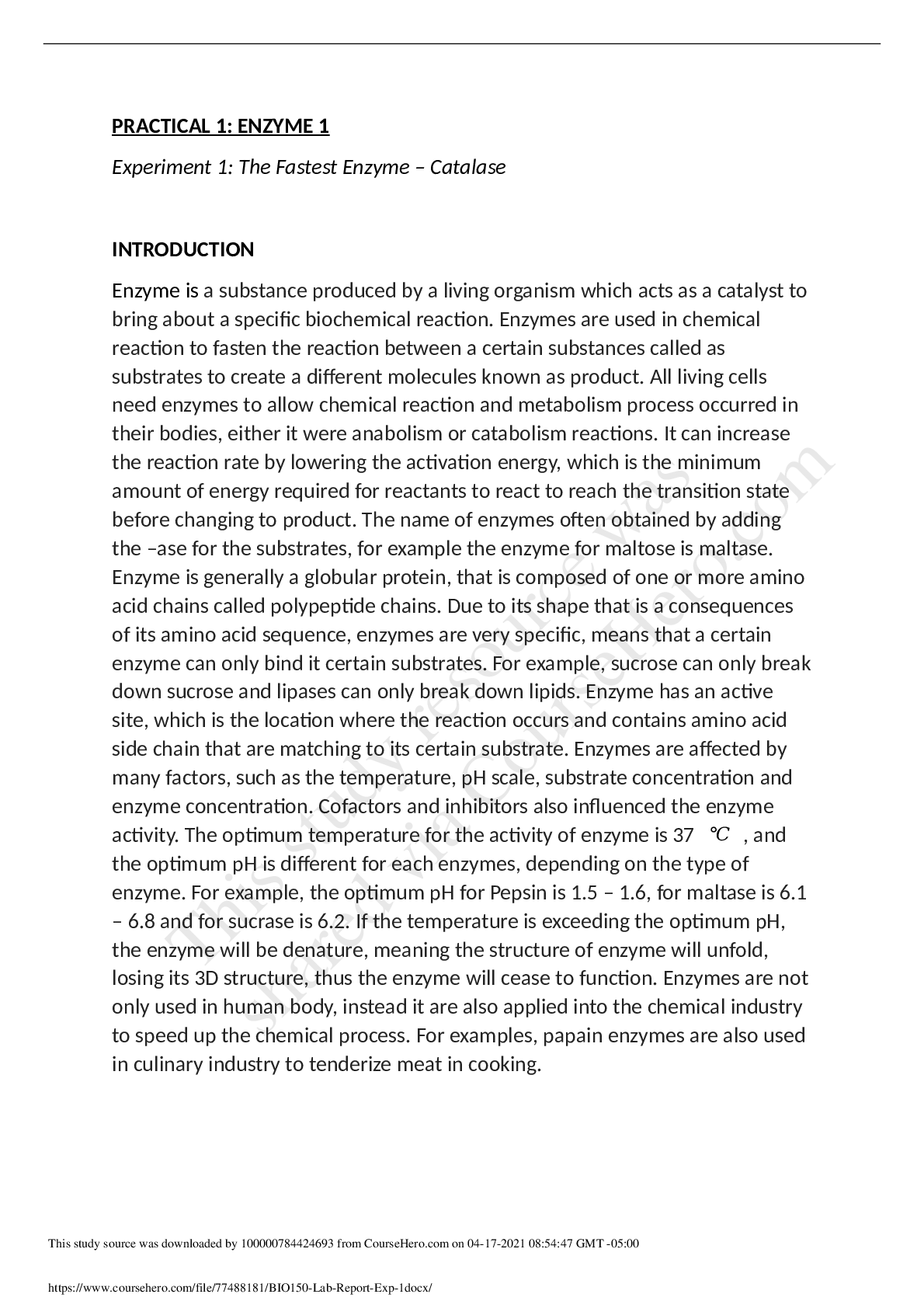

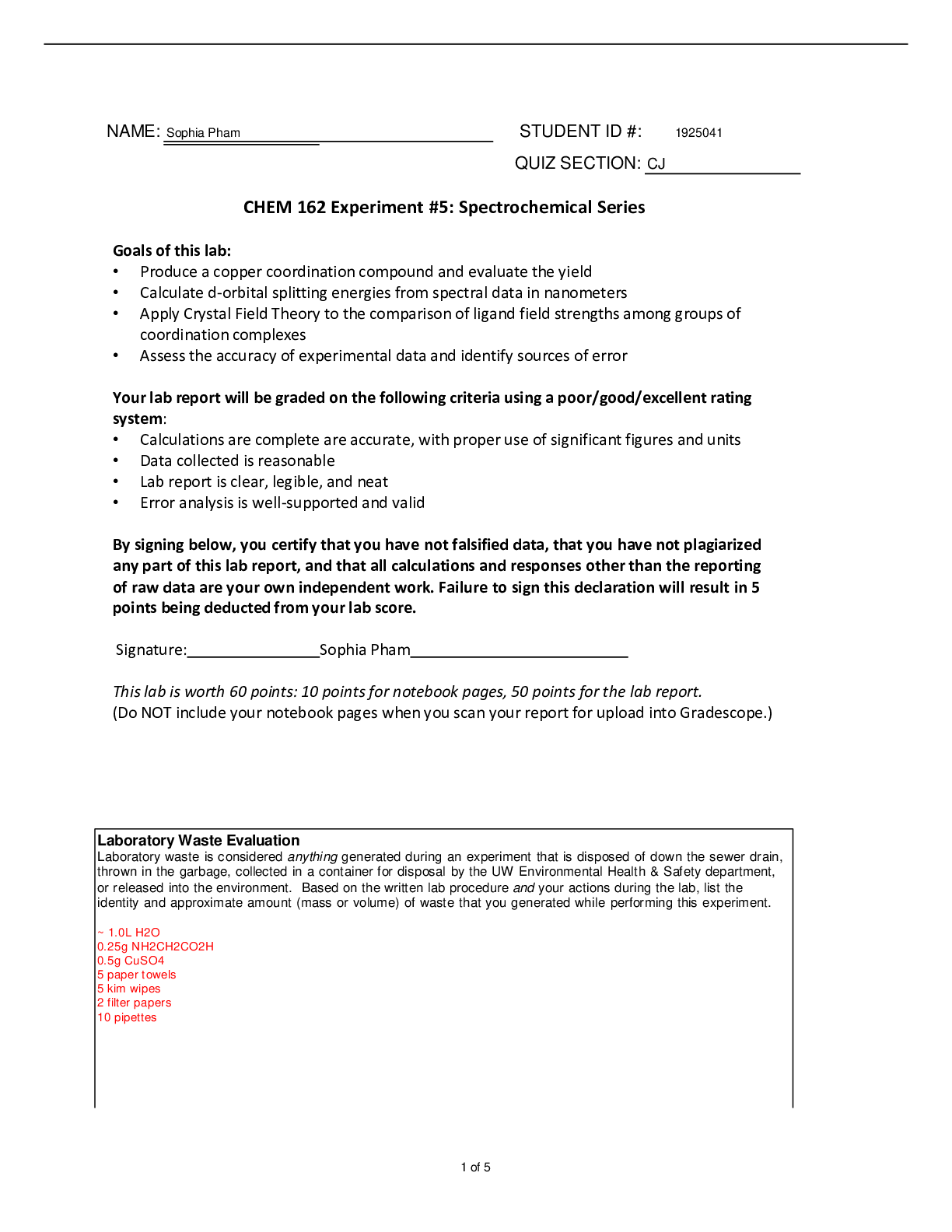
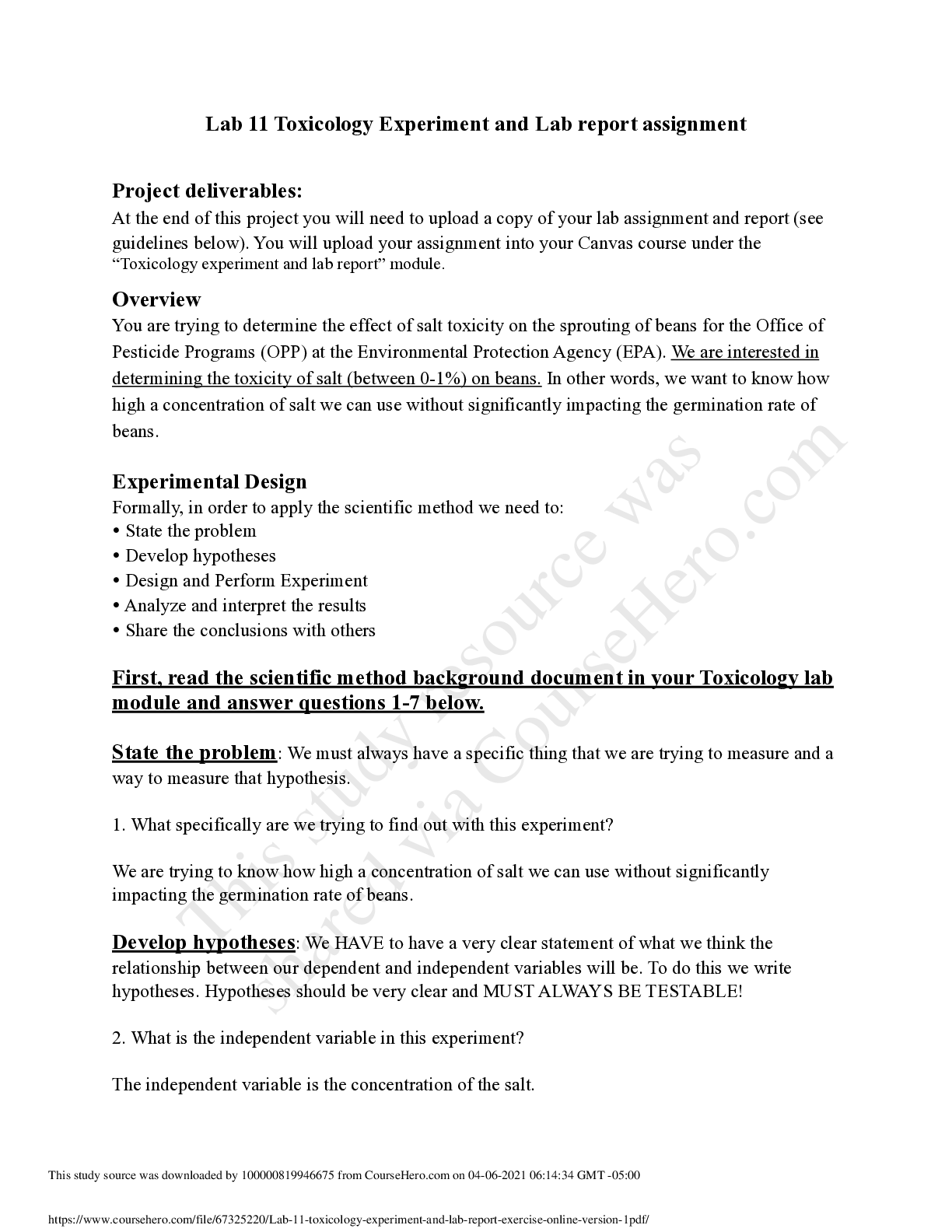
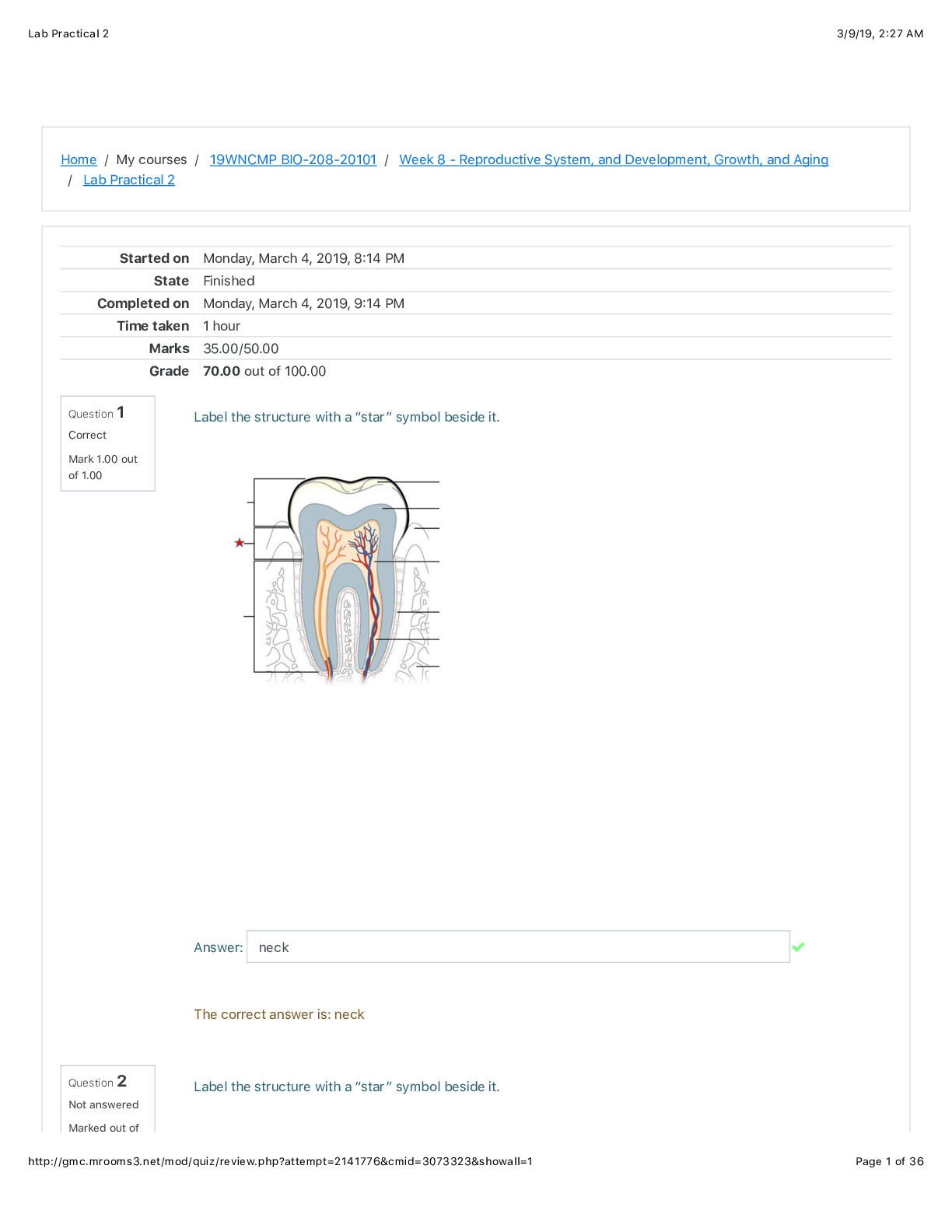


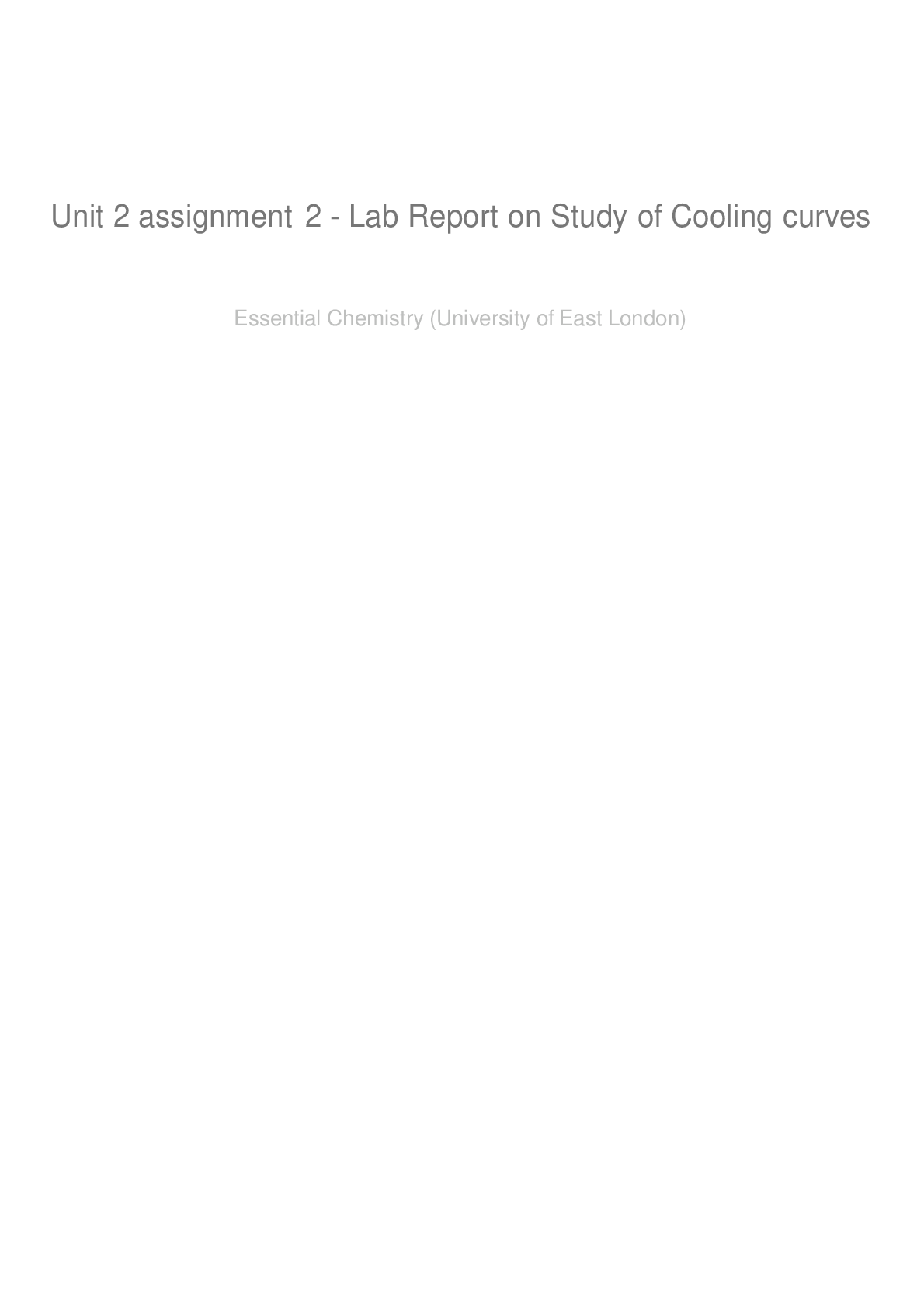
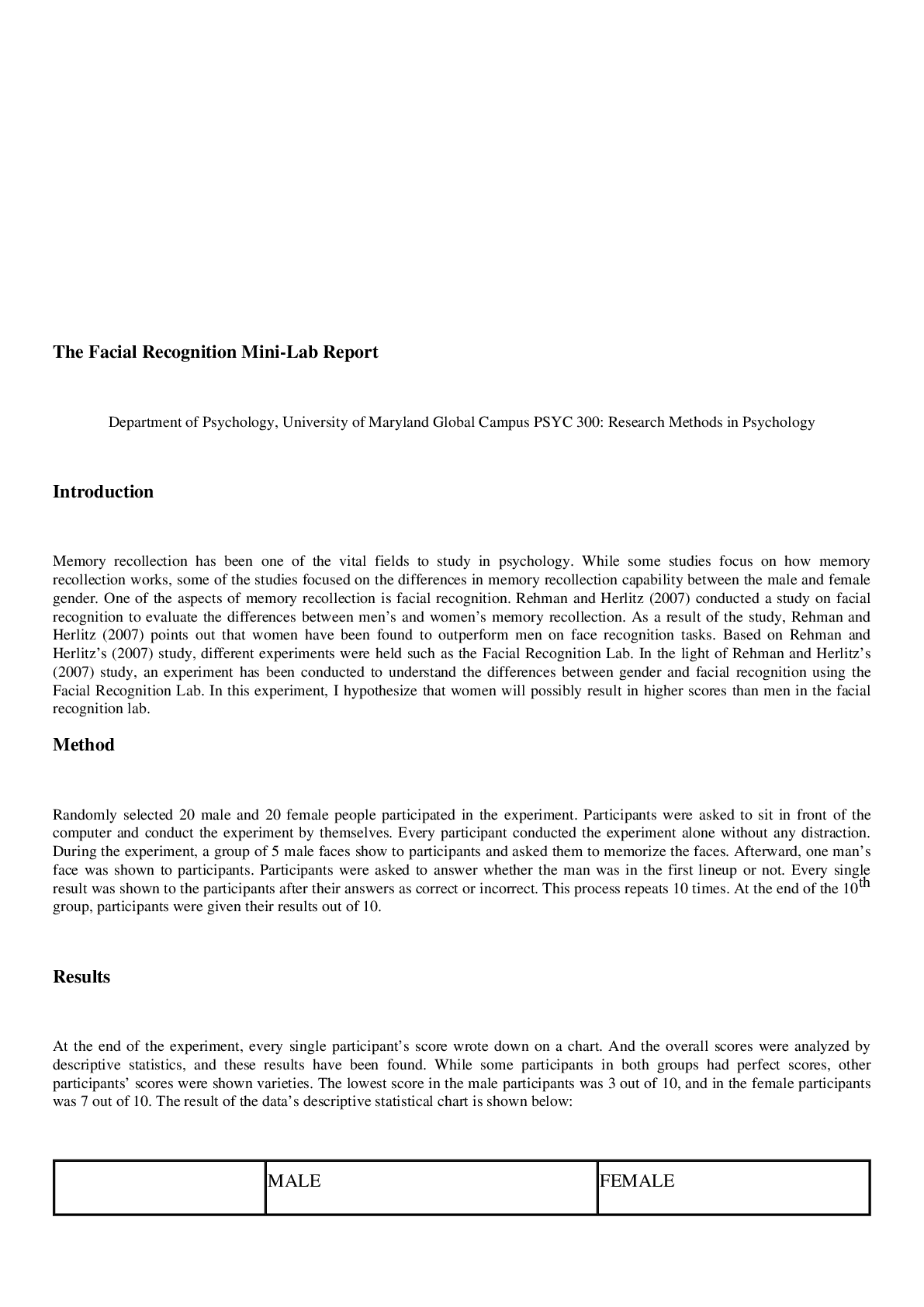
 (1).png)
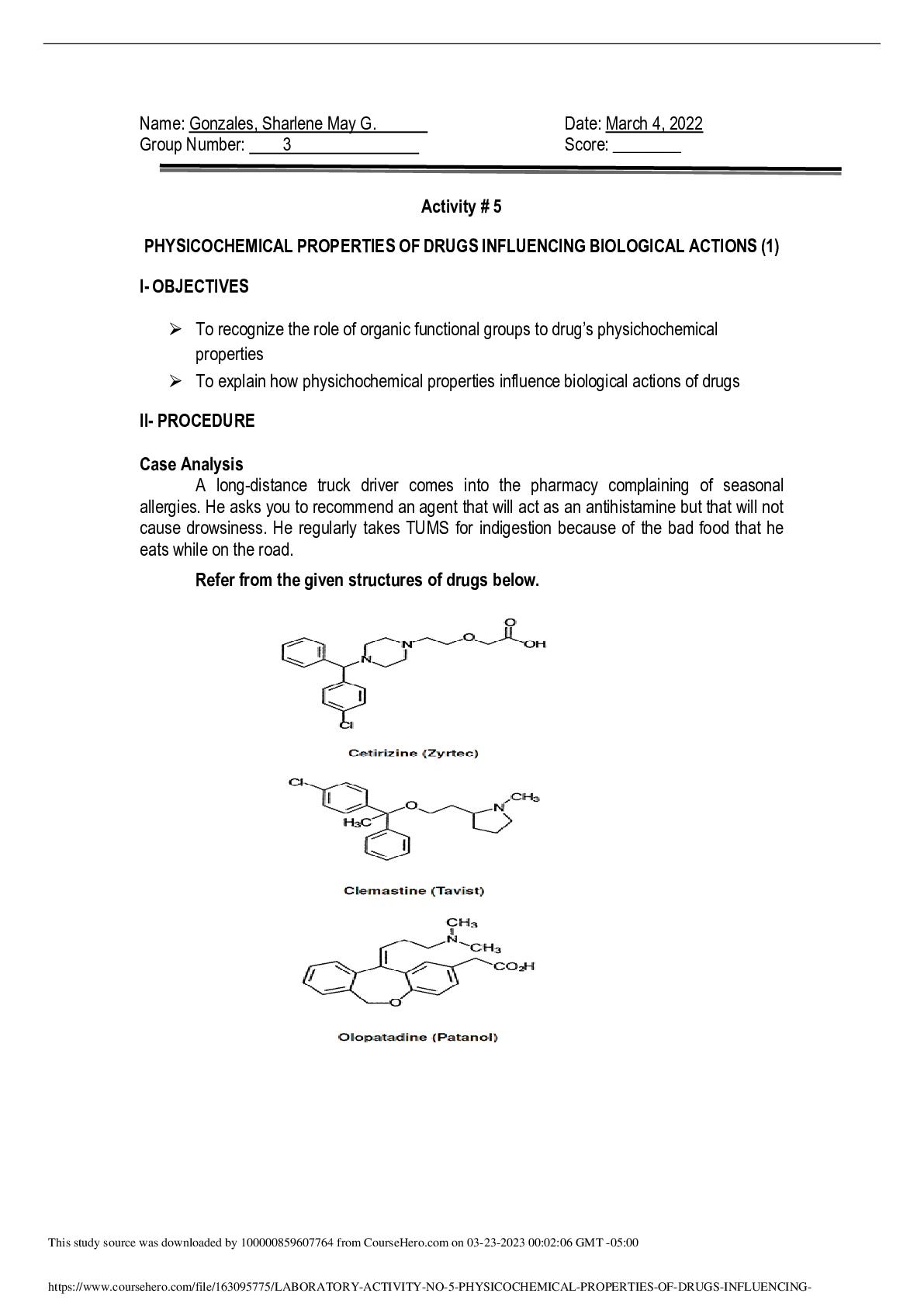
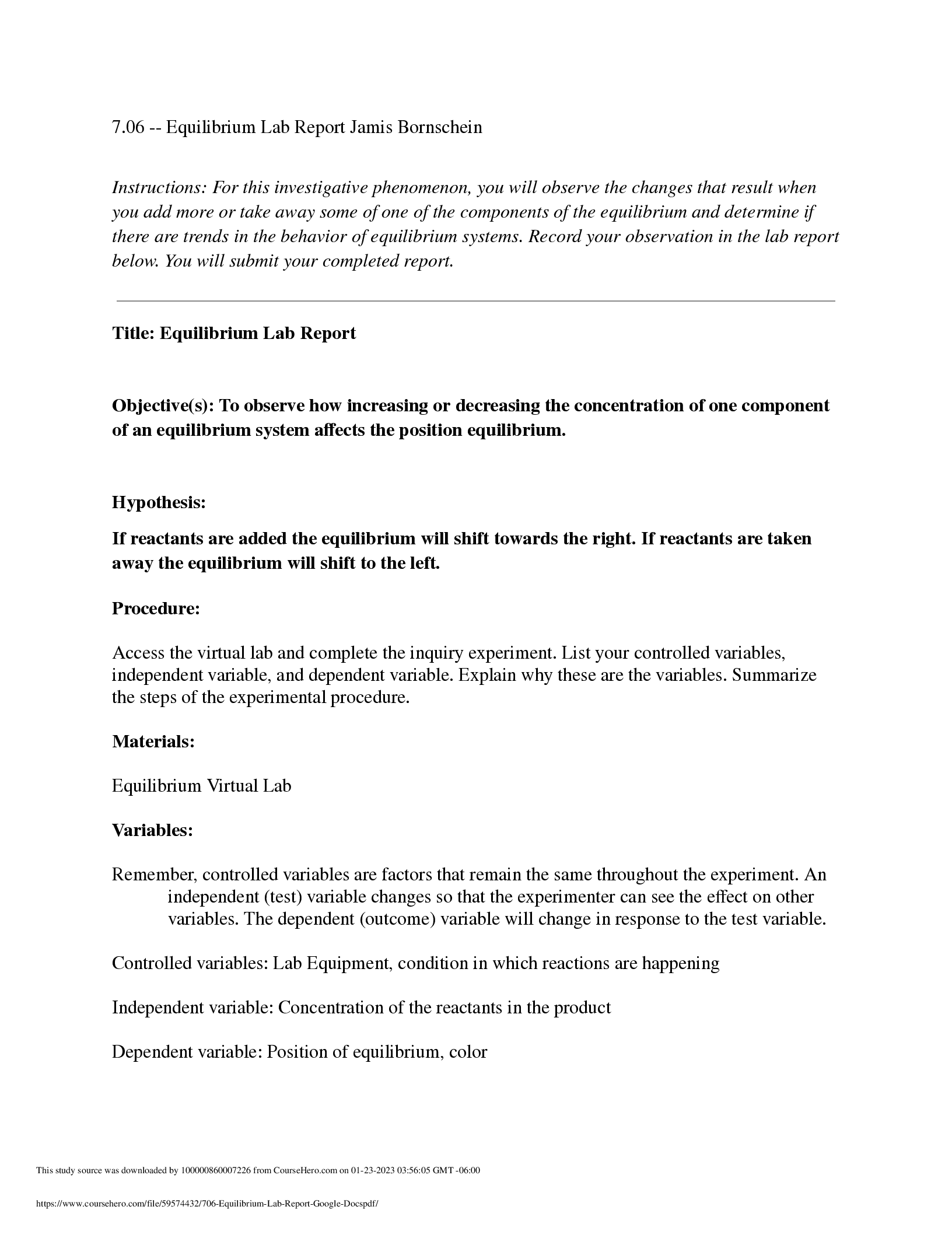
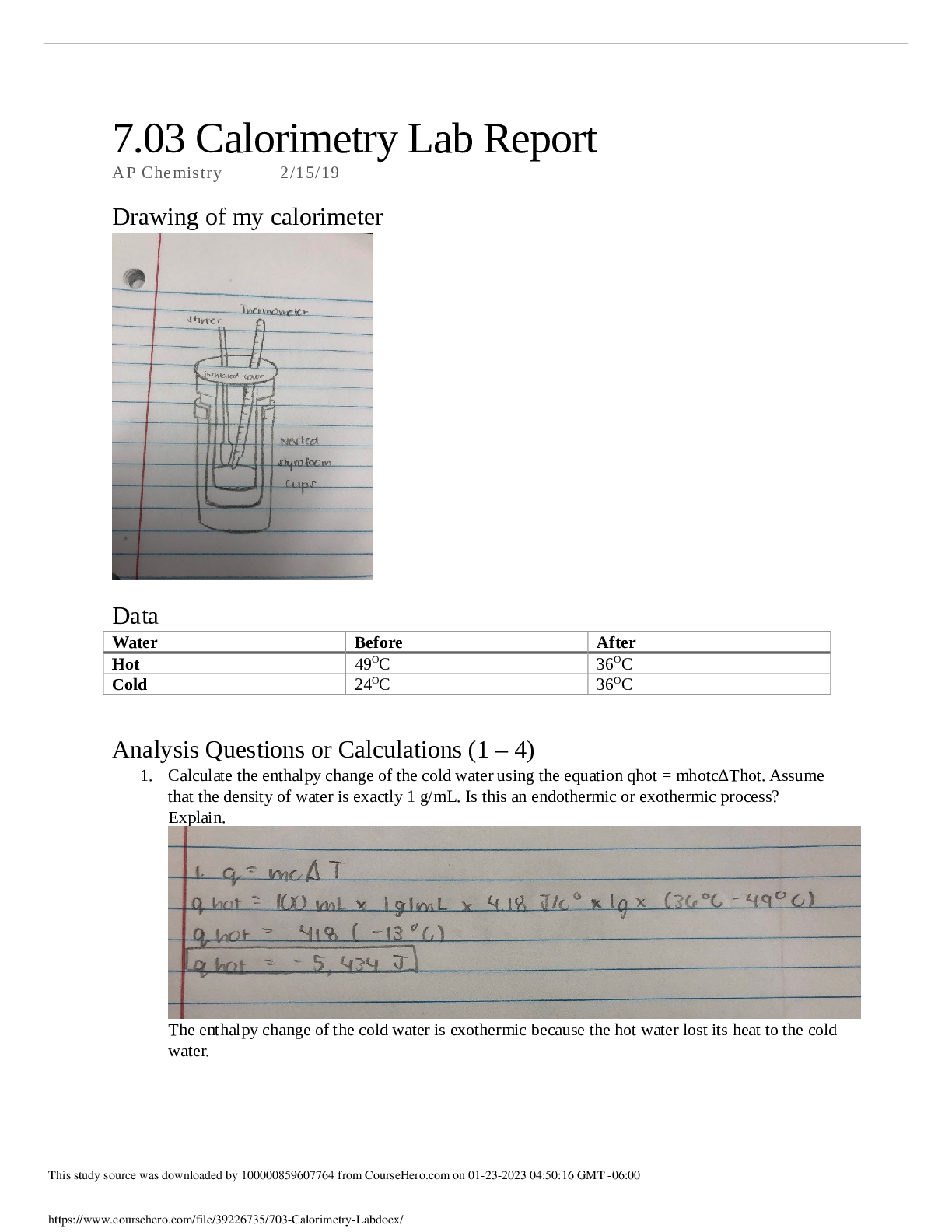



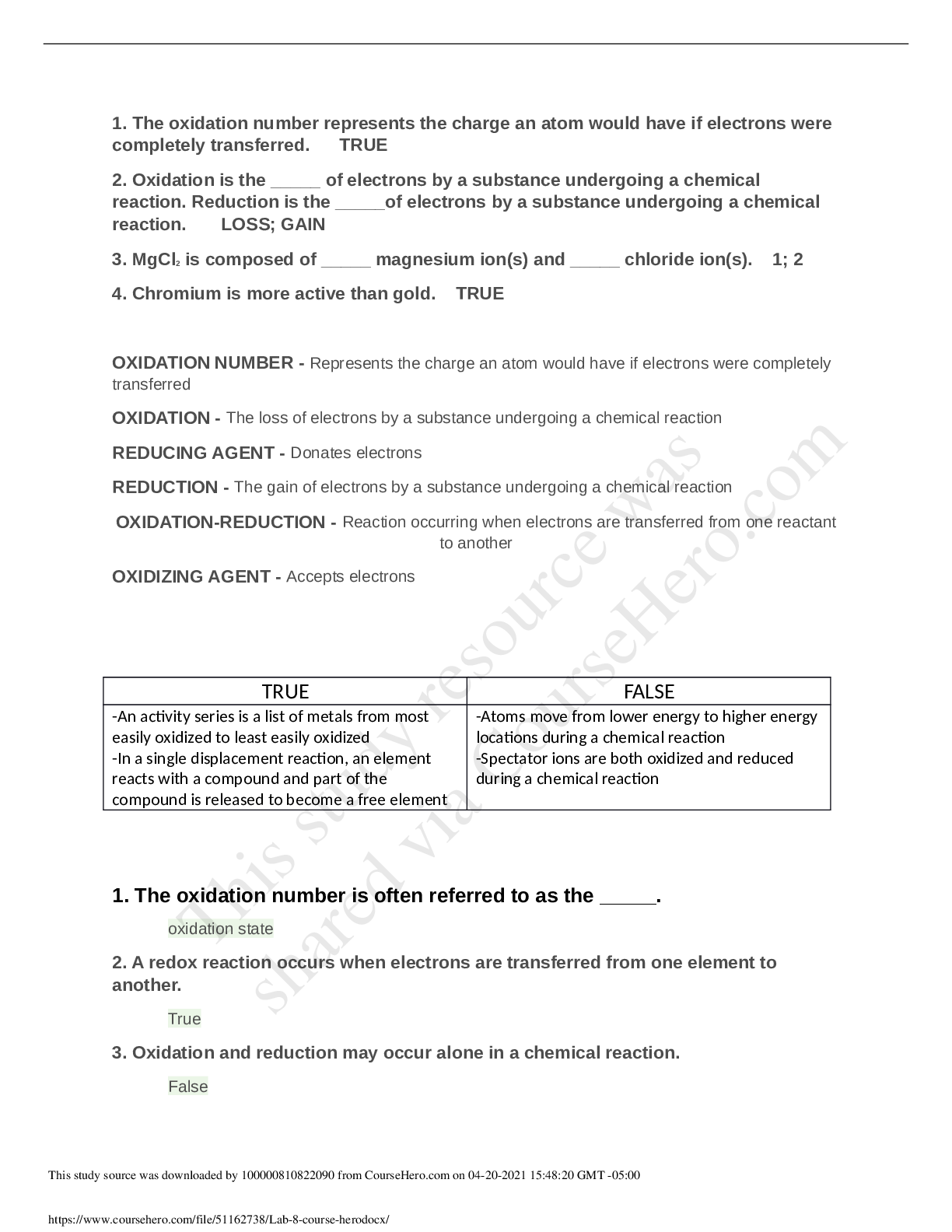

.png)
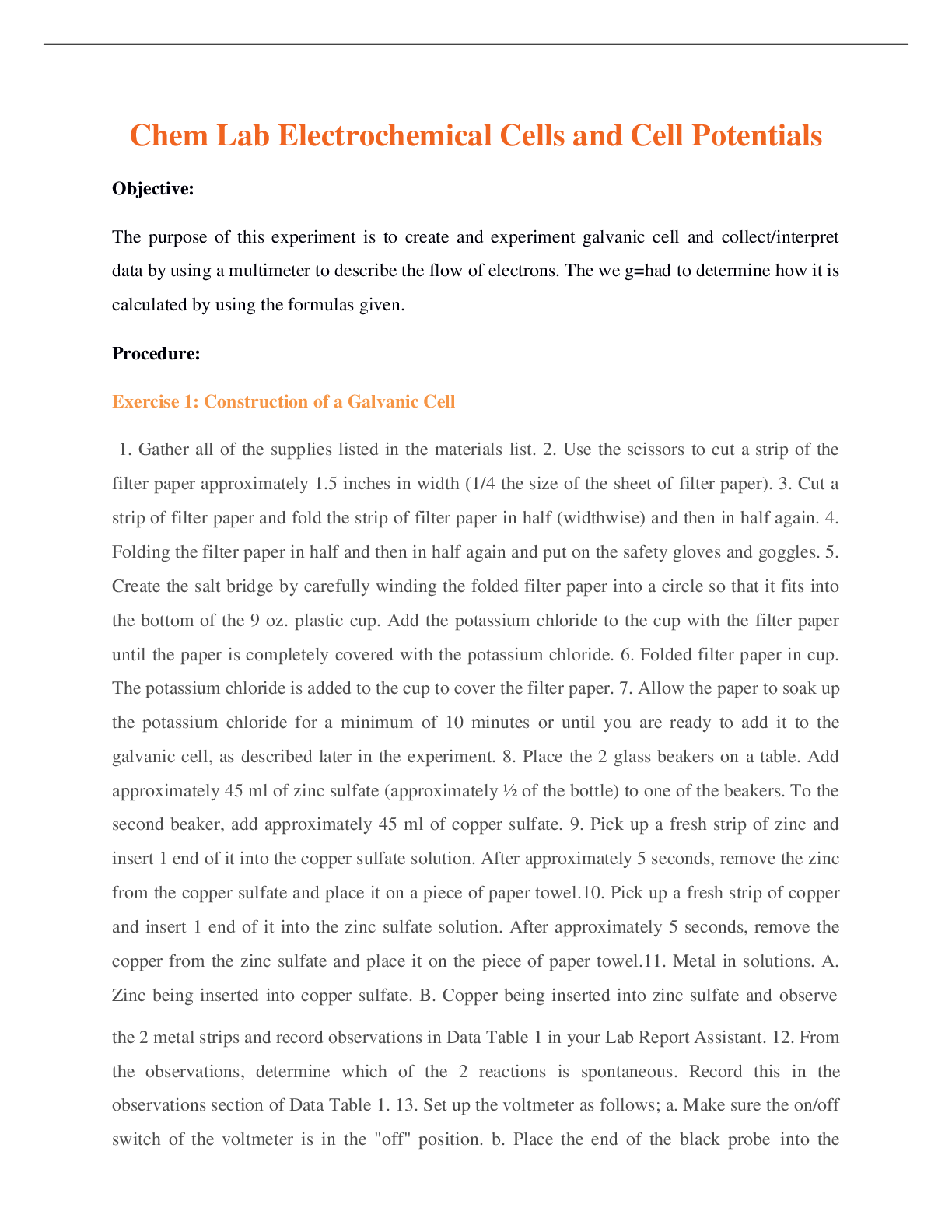
.png)

